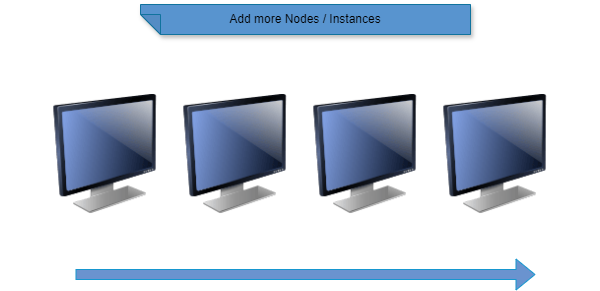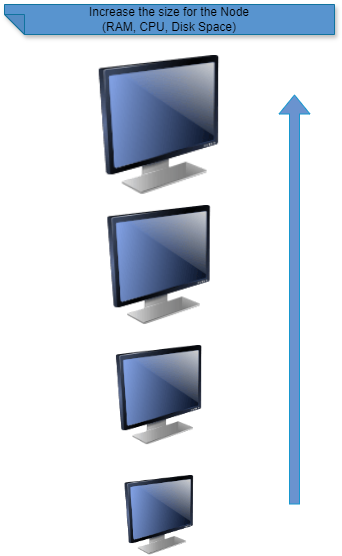#1 System Design : Vertical vs Horizontal Scaling.!
 Mukesh
Mukesh
In system design horizontal and vertical scaling are two fundamental strategies that can be used to enhance the capacity, performance, and reliability of systems, particularly in the context of databases and distributed systems. Both strategies aim to handle increasing loads and data volumes but differ in approaches that they follow.
What is Horizontal Scaling
Horizontal scaling, also known as scaling out, involves adding more nodes or machines to a system. Instead of increasing the capacity of a single server, the workload is distributed across multiple servers.

Key Features:
Distributed Workload: Workload is distributed across multiple servers, enhancing performance and reliability.
Flexibility: Can easily add more servers to accommodate growing demands.
Fault Tolerance: Improved fault tolerance since the failure of one node doesn’t bring down the entire system.
What is Vertical Scaling
Vertical scaling, also known as scaling up, involves increasing the capacity of a single server by adding more CPU, RAM, or disk space. This approach enhances the power of the existing hardware rather than adding more nodes.

Key Features:
Enhancing Existing Hardware: Upgrade the existing server’s capacity by increasing CPU, RAM, or disk space.
Single Node Management: Simpler management as the system runs on a single node.
Software Simplicity: Less complexity in system design since the system doesn’t need to handle distribution.
Limitations: There's a physical limit to how much you can scale a single server, and it can be costly.
Horizontal Scaling:
Advantages:
Better fault tolerance and high availability.
Easy to scale as required.
Can handle very large dataset and traffic.
Disadvantages:
More complex architecture and management.
Requires distributed systems knowledge.
Potential for network latency and synchronization issues.
Vertical Scaling:
Advantages:
Simpler architecture and management.
No need for distributed systems complexity.
Suitable for smaller scale applications or monolithic systems.
Disadvantages:
Limited by hardware capacity and cost.
Single point of failure.
Not as flexible for extremely large datasets or high traffic.
Subscribe to my newsletter
Read articles from Mukesh directly inside your inbox. Subscribe to the newsletter, and don't miss out.
Written by

Mukesh
Mukesh
Hey, I am Software Engineer from India. I am interested in developing software solutions using Java, JavaScript, HTML, CSS.